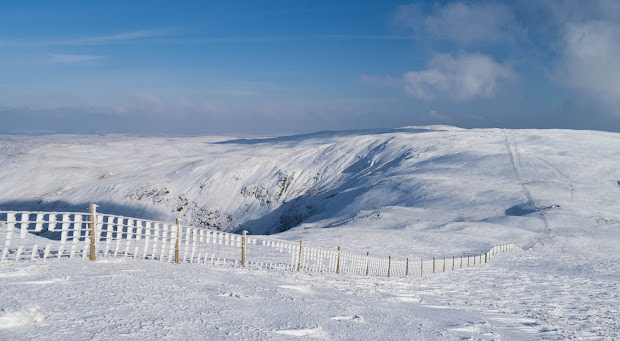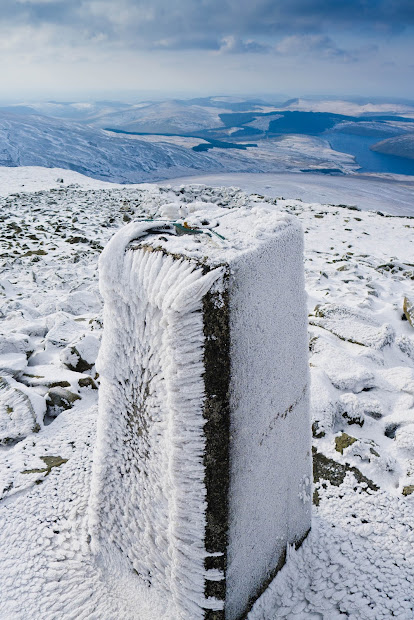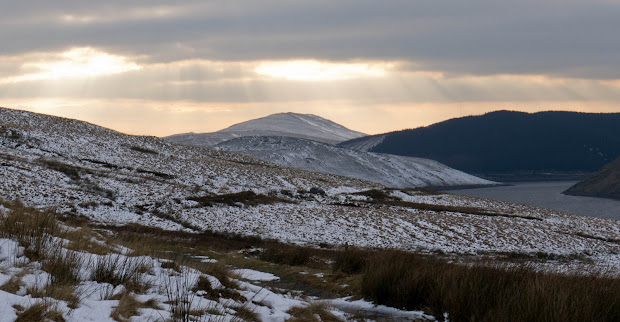Pumlumon : 2/2/2012

Despite living just on the ‘wrong’ (Shropshire) side of Offa’s Dyke, Powys always feels rather like ‘home’. We regularly visit or shop in Newtown, Welshpool, Llani and Hay, and many of my favourite hills are in Powys: The Black Mountains, Mynydd Du, and of course, Pumlumon (although the border with Ceredigion runs along the plateau).
I chanced upon Mike Parker’s “Real Powys” recently, and it’s one of the most entertaining books I’ve read for a long time. It’s billed as a ‘psychogeography’ of Powys – but don’t let that put you off: It’s sharply written, very funny and stuffed full of odd details and great anecdotes while underneath it all runs a huge dose of affection for his home county. If you live in or near Powys – or even just fly in occasionally to T3 at Llandegley International Airport, it’s a great read.
However, I suspect Pumlumon isn’t one of his favourite mountains. He describes it as:
Pumlumon … that great upland sponge that squats like a fat toad at the centre of Wales. At least the grey miasma oozing out of the slopes had successfully blotted out most of the two hundred wind turbines that now encircle it
Unlike him, I seem to be always drawn back here. When I can’t make my mind up where to go, the answer is always this: Pumlumon. While the convenience is a factor, the remoteness is the magnet that brings me back time and again. As I’ve mentioned before, there’s plenty of signs of man’s presence here, but hardly anything that feels ‘contemporary’. Even the Outdoor Centre at Maesnant looks as though nobody has stayed there for years. With the remains of unused sheepfolds and age-old cairns, it can feel like a dead landscape, just waiting to be explored .
And on a day like Thursday, when it’s cold, white, and the wind has filled the paths and footsteps of everyone else with blown powder snow, it’s just a great place to be.
![]()





